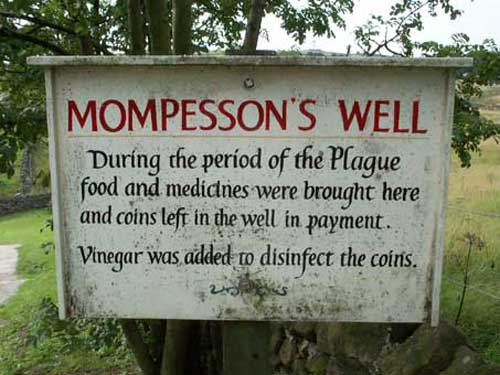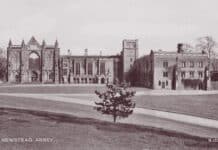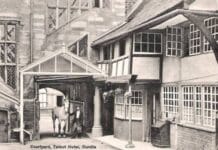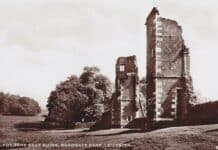SELENE PAXTON-BROOKS describes how the Derbyshire villagers of Eyam remember their ancestors who bravely fought the spread of the bubonic plague in 1665

Today, on the last Sunday of August, ‘Plague Sunday’, I will be driving up the M1 to visit the village of Eyam in Derbyshire. The courageous people of this pretty village, lead by their rector, William Mompesson and minister Thomas Stanley, realised that the only way to stop the Great Plague from spreading to the surrounding towns and villages was to close Eyam off completely and isolate the disease within its walls.
George Vicars, the village tailor, probably thought nothing of ordering a bale of cloth from London in the summer of 1665, but it was this simple bundle that transported the fleas which carried bubonic plague to the quiet, but brave village. He was the first to die of the plague on 7th September 1665.
As more of the community died, Mompesson knew that the only way to stop infection would be to create their own quarantine, and to minimise the danger to their neighbours food and other necessary supplies were left outside the village at the Boundary stones.
The Earl of Devonshire, who lived in nearby Chatsworth House, donated food and medical supplies to the cut-off villagers, and any other items would be paid with coins soaked in either running water or vinegar to keep the disease at bay. Even weekly church services were held outside, at Cucklet Cleft or Delf, so that close contact between the villagers could be reduced in the hope that being in the open air would reduce the chance of contamination.
The plague raged on in Eyam for about 14 months and claimed the lives of a least 260 of the 350 who selflessly chose to keep themselves away from their neighbours, and today I am hoping to take part in the remembrance service held at Cucklet Cleft each year to remember those who lost their lives trying to prevent the plague from spreading.
It is inevitable then, that Eyam is haunted, not only by the reminders of the past written on boards around the village to educate its visitors, but also by the spirits of the dead who lost their lives in such an unpleasant way.
The nursery rhyme ‘Ring, o’Ring of roseies, a pocket full of posies, ah-tissue. ah-tissue, we all fall down!’ was written about the disease, and in London it is estimated that 7,000 people lost their live a week in August 1665.
Next to the Parish Church stand a line of cottages named ‘Plague Cottages’, where Vicars lived, and all around the village the reminders of that tragic time give an eerie stillness that hangs in the air.
One of the cottages is said to be haunted by a pleasant faced lady who wears a blue smock, who has reportedly to wake people in the middle of the night. Families buried their loved one in their gardens and in the surrounding fields. Weathered tombstones rise unexpectedly around the village, with large family graves adorning the outskirts.
The Ghosts of Eyam, Derbyshire
Probably the most haunted building is that of ‘The Miner’s Arms’ public house.
Two playful spirits, Emily and Sarah, are regularly heard playing in the pub, doors will often open and close on their own, and objects go missing only to be found hidden around the pub. An old woman, dressed in black has also been seen here.
To end my visit I will stop off at Eyam churchyard to pay my respects to Catherine Mompesson, wife of William loyally stayed by her husbands side to tend to the sick, when he sent his two children away to be looked after by family in Yorkshire.
Catherine died almost a year to the day the plague began in Eyam, she was the 200th victim and her tomb is decorated each year with a rose entwined wreath.
Catherine’s ghost is still said to haunt the rectory, a maid reportedly met her on the back stairs after her death, her footsteps can be heard moving from room to room and doors open and close on their own. Even the rector reported hearing the rustling of an invisible dress as he sat reading.
I have wanted to visit this ‘Plague Village’ since I read Geraldine Brooks’ book ‘A Year of Wonders’. Eyam, I’m sure will be a harrowing experience, but one that reminds us how selfless and courageous a group of people can be.









